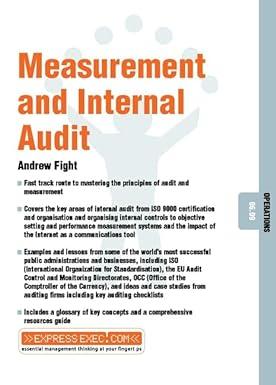Question
Kelly Kneppy owns a company that manufactures and sells camping equipment and outdoor gear. Kellys latest creation is the Bear-B-Gone, a tent constructed of Kevlar
Kelly Kneppy owns a company that manufactures and sells camping equipment and outdoor
gear. Kellys latest creation is the Bear-B-Gone, a tent constructed of Kevlar and reinforced steel
mesh that could theoretically protect campers (who hadnt followed appropriate food storage
guidelines) from bear attacks. Kelly believes the Bear-B-Gone offers many of the same desirable
features as other tents on the market, and that this extreme safety feature will make it one of the
best-selling tents in short order.
Kelly can make the Bear-B-Gone with one of two available technologies. The first is a labor-
intensive process, that if chosen will require $600,000 per year in fixed overhead costs, and the
following in variable costs of production per unit: direct materials of $75, direct labor of $75,
and overhead of $20. The second technology is a more automated (machine-dependent) process,
that if chosen will require $2,000,000 per year in fixed overhead costs, and the following in
variable costs of production: direct materials of $75, direct labor of $5, and overhead of $60.
Kelly believes she can sell the tent for $200.
2) Which process is preferred if sales are expected to be 40,000 units? How about at 60,000
units? At what sales level would the two processes yield equivalent profit (round to the
nearest whole unit)?
Step by Step Solution
There are 3 Steps involved in it
Step: 1

Get Instant Access to Expert-Tailored Solutions
See step-by-step solutions with expert insights and AI powered tools for academic success
Step: 2

Step: 3

Ace Your Homework with AI
Get the answers you need in no time with our AI-driven, step-by-step assistance
Get Started


